Eileen Kwan has a major love affair with plants and with sewing. Actually, a lifelong love affair that is now very much the raison d’etre of her artistic oeuvre. “Embroidery, like plants, are democratic forms. You run the gamut of society and just about every woman has access to needle and thread, if nothing else; and there is more or less access to plants and flowers. What I particularly like about embroidery, is that it is a very tactile art form. Every stitch is intentional. Embroidery is also very demanding, especially if you are like me and pretty much do all of your works by hand. But what I have found, over time, is that embroidery is a form of meditation. It is my time to think. When I embroider, it is my time to be quiet.”
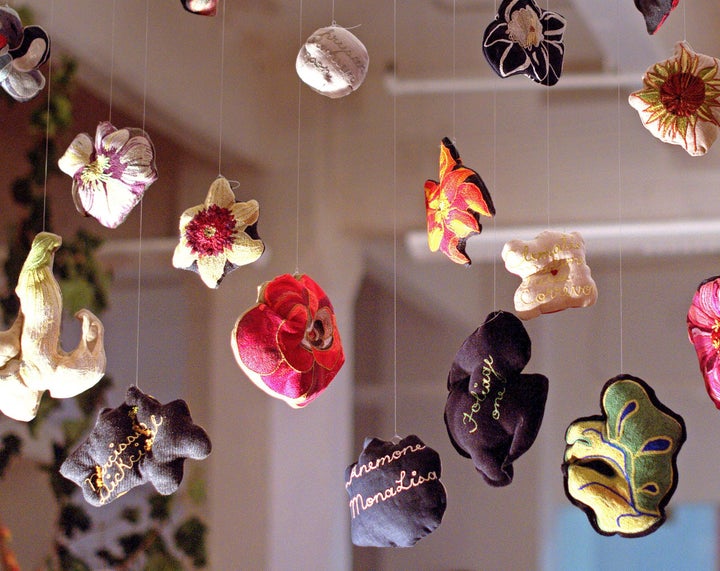
Though she admits that there are no straight lines in her path to becoming a visual artist, Eileen Kwan had been heading in that direction from she was 12 years old, and started getting her own pocket money. Kwan used that money to buy clothing that made a statement. She recognizes that this decision on how to spend her own money, was her first foray into a life of creativity.
Born to immigrant Chinese parents in Montreal, Canada, Eileen Kwan grew up in a district called the ‘United Nations’ of Quebec, because people from so many different countries lived there. “Where I was born, ‘The Main’ in Saint Laurent, is the place where, historically, immigrants got their start. There were Jewish people, Greeks, Chinese, just everybody all around you. When I was a child, you could still see live chickens being slaughtered in my district. For me, where I lived was a place full of mysteries and textures.”
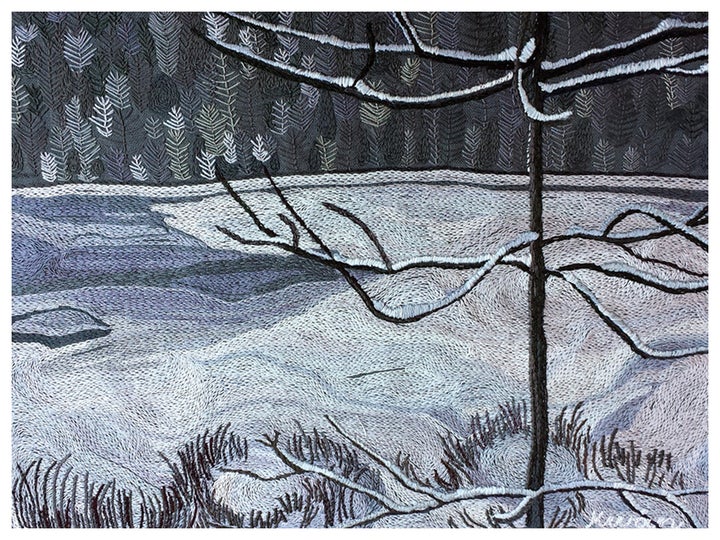
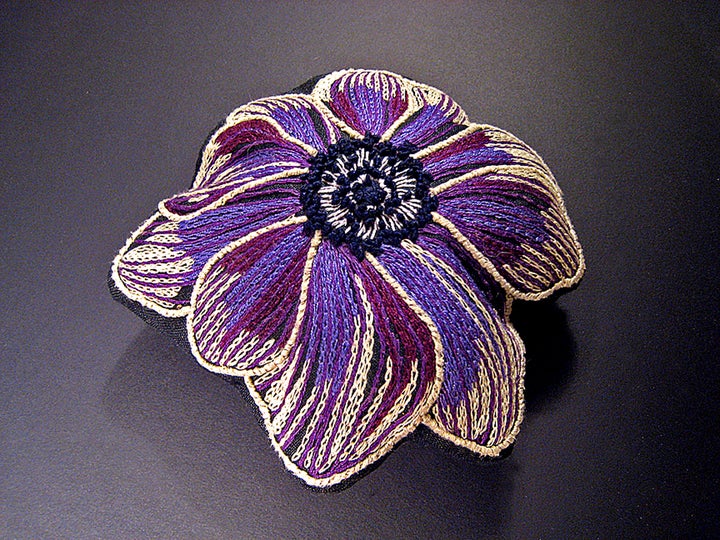
She attended elementary school in this district, where she felt very much the insider, before transferring to a high school in the suburbs, which was an isolating and challenging experience. Following high school, she was one of the few to be granted entrance to the prestigious Ryerson Polytechnic, in Toronto, then the only degree-granting fashion school in the entire country. Eileen Kwan arrived at fashion through a process of elimination, wanting something both artistic and functional to do.
In her first two years at Ryerson, she found the environment fresh and creative, but the work load was increasingly heavy. There was a fifty percent attrition rate between the first and second year of the school, and by the fourth year, only six of the one hundred students who started out actually graduated. “Fashion is a tough, competitive industry to be in, but I was lucky in that I apprenticed with an Italian tailor, the kind of person who is a mythical figure now with chalk in hand and tape measurements. I learned a lot from him.”
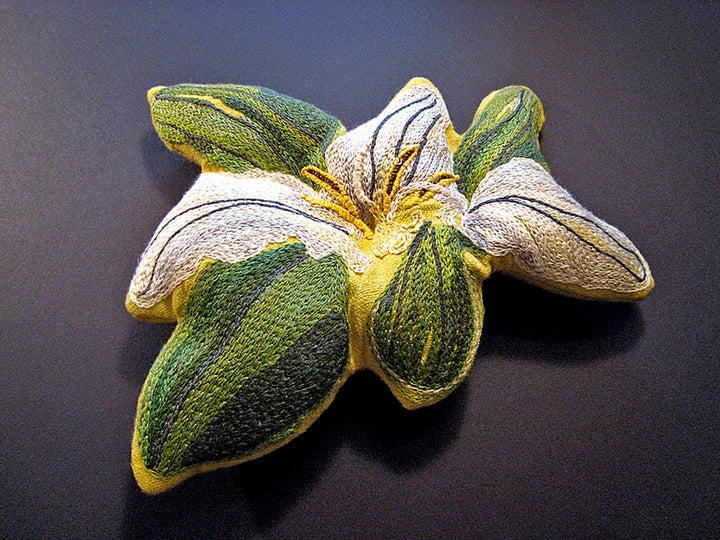
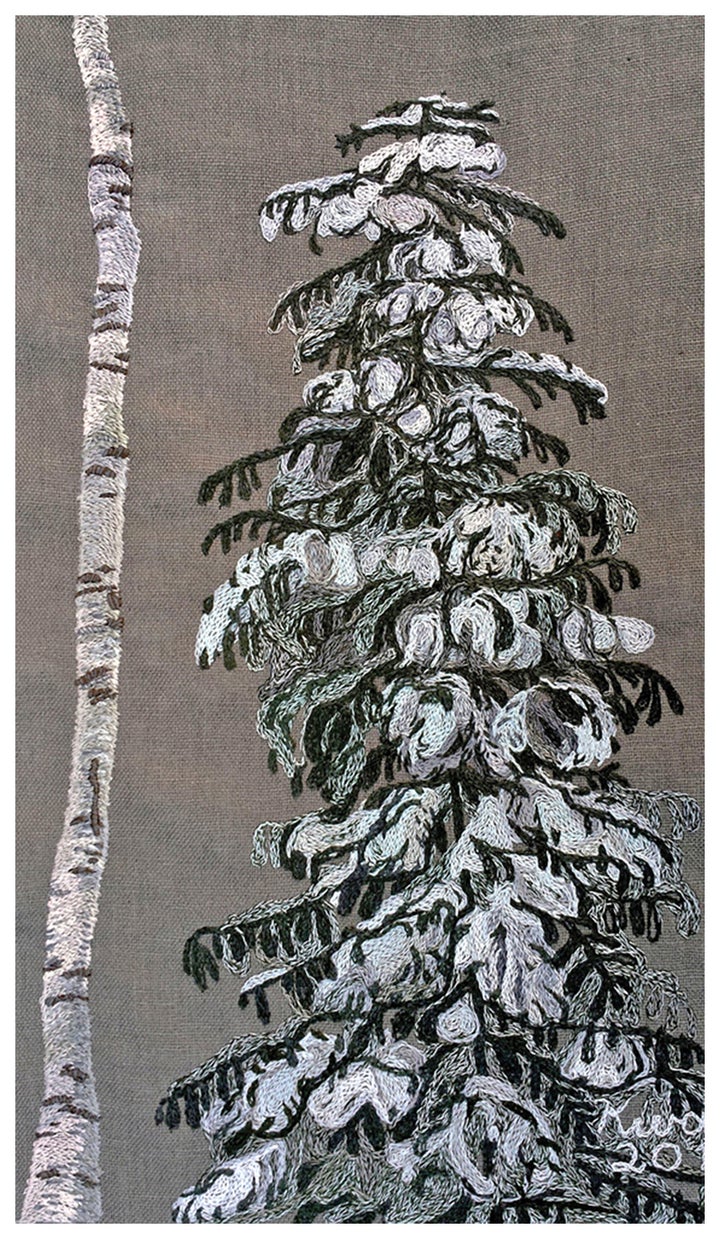
Eileen Kwan would eventually go on to make a name for herself in the fashion industry, her signature achievement being a line of clothing she developed under the label 'Miss Bad Betty' which sold exceptionally well.
But along the way she suffered two catastrophic losses that forced her to rethink her priorities. The Italian tailor who had been a mentor to her suffered a stroke and could no longer work, and her father died of a heart attack. “I was 28 and losses like those change a person’s perception of time. I became a competitive cyclist for ten years after that and lived in France for five years. During this time fashion started to lose its magic and enchantment for me.”
It was then that Kwan started to turn her attention to plants and to embroidery.
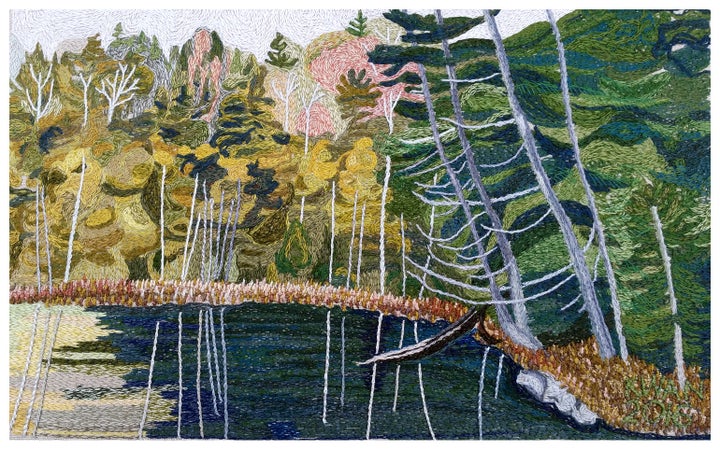
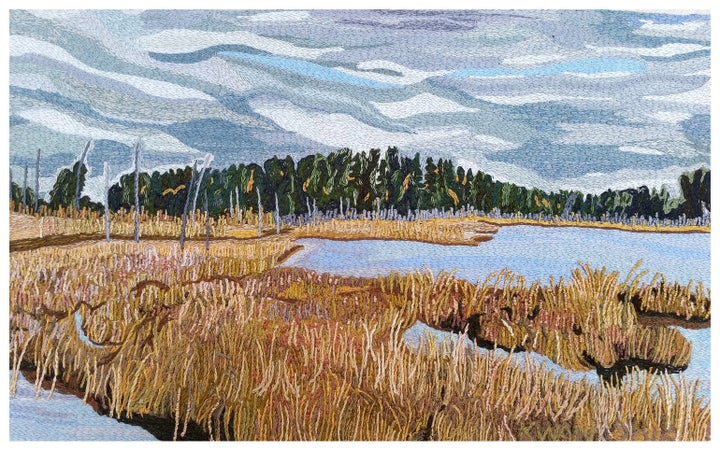
While she had always kept indoor plants in the apartments in which she lived, she found herself becoming absorbed and fascinated with the miracle of plant growth. “The garden says go, go, go. Flowers re-assess what they need to do to live. You can see this miracle, I believe, even more up close in a place like Canada, where much of the year it is cold and there is such a short growing season.”
Kwan moved into a house with a backyard filled with eight life-sized bags of garbage. Slowly she started removing the garbage and taking care of the earth. Out of that came her first outdoor garden. “I started what I call a ‘friendship quilt garden’ by removing those bags of garbage, and getting the soil ready. The beautiful thing about gardening is the community that develops around you when you garden. The culture of gardening is all about sharing. Though I did not know what I was doing when I started, people gave me things. Other gardeners literally shared cuttings, seeds and roots, and it was all an exploration. “
Before long, Kwan was receiving compliments, then commissions to design gardens. Today, she runs a thriving garden design business and utilizes embroidered plant installations as part of her artistic practice.
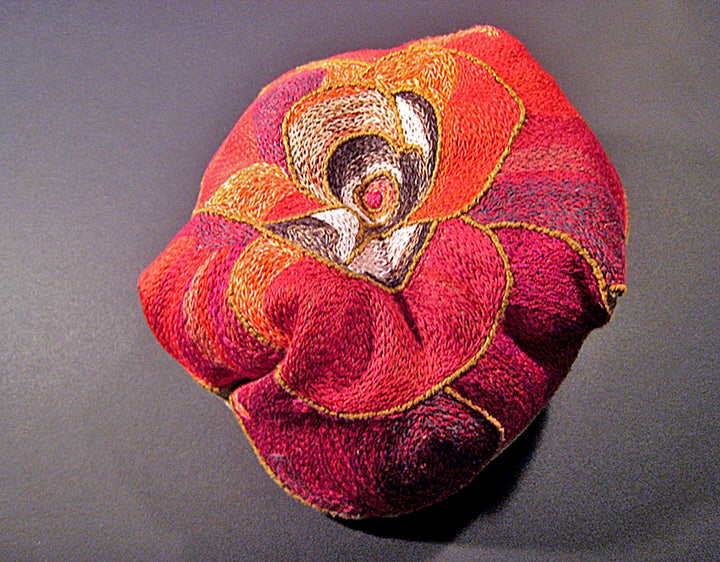
“In the winter, I missed having the plants around. My embroidery pieces became my winter garden.” For Kwan, the embroidery work that she does is coming full circle, because it is twinning a language she knows – embroidery, with the language of flowers. Before long, her embroidered flowers started becoming more ambitious resulting in installation pieces. “My first floral embroidery pieces I conceptualized as hanging flowers and botanical sculptures. These works were more three-dimensional. I was playing with the idea of how most of us live our lives in urban places and never really get to see so-called untamed or 'wild' places. These hanging florals of mine were very much playing with this idea. I envisioned them as plants suspended from the ceiling like mobiles. I wanted people to walk up and interact with the work. Like a spinning bouquet over their heads.”
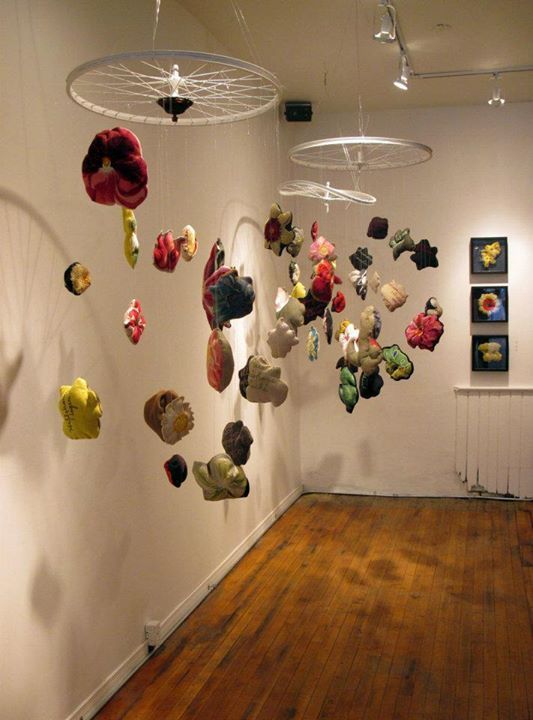
More recently, the artist has stepped away from looking almost exclusively at blooms and flowers to looking more closely at the architecture of plants and landscapes. Her frame of reference seems to have grown larger. For Kwan, the landscape encompasses everything, the flower, the blooms, and even the structure of the plants. “I got the chance recently to spend three weeks in an old-growth forest. I really do not have the words to describe to you what that experience was like. 'Bliss', 'mystery' and 'magic' are the only words that come to mind. These trees have lived through everything and they have seen everything. Yet, I am cognizant that we might lose these things of incredible and inescapable beauty. In my own way, as I was embroidering these landscapes, I felt that I was using the language that I have at hand, the language that I know how to use, the language of embroidery, landscape and flowers, to capture these things of incredible beauty.”
Until next time.
